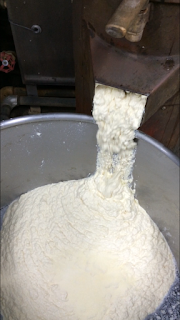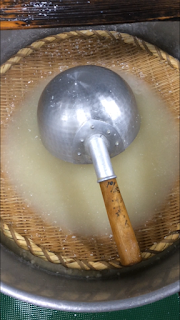It was founded in 1952 in Odawara, Kanagawa pref., by Kazama Juusaku (風間重作). The business was based in then Juu-ji machi (十字町), a historical part of Odawara that included mostly present Minami-cho.
Kazama Juusaku's family continues the business that involves tofu, aburaage and other soy bean products. It includes production, wholesale and retail.
Their main customers are: general retail stores, supermarkets, fishmongers ("sakana-ya"), greengrocers ("yao-ya"), meat shops ("niku-ya"), Japanese style inns ("ryokan"),
hotels, restaurants, sushi restaurants, Japanese high-class restaurants ("ryoutei"), hospitals, kindergartens, nursing homes etc.
In 1955 Kazama tofu-ten moved to its present address in Itabashi.
In 1972 changed to Co.Ltd.
They were awarded "Kanagawa Excellent Companies" in 1992.
Their philosophy is, in contrast to industrial mass-production, to offer products that are natural, fresh and healthy. We can find both in Japan as there are many small tofu makers like Kazama that still use traditional ways of making tofu and aburaage which taste far better and are more natural than industrial products. Since I have come to Japan I became quite a fan of tofu and aburaage, and I think Kazama's taste best in Odawara!
Address: Kazama Tofu-ten
250-0034 Odawara-shi
Itabashi 82
Tel. 0465-22-3424
Address: Kazama Tofu-ten
250-0034 Odawara-shi
Itabashi 82
Tel. 0465-22-3424
Fax. 0465-24-3511



























